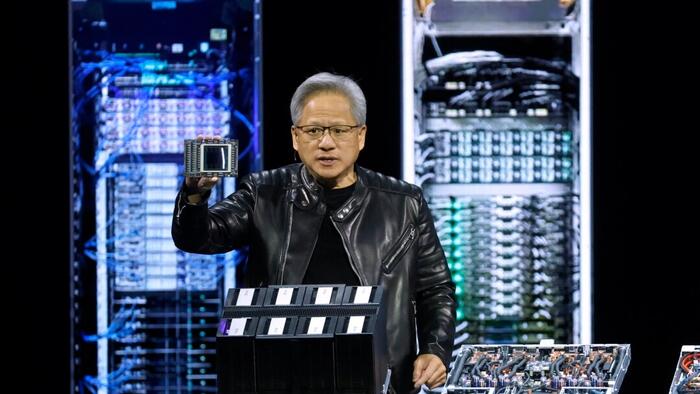Copyright Simple Flying

Pratt & Whitney and General Electric Aerospace are two of the finest aviation engine makers in the world. These two legendary American engineering companies have built incredible legacies in the history of the United States, each contributing to watershed moments in the history of aviation. These two great aerospace firms are central pillars of the US aerospace industry, which is the largest and most advanced in any country around the world. Each got its start in unique ways, with P&W tracing its roots to the 1920s and finding the spotlight for the time with its radial R-1340 Wasp engine, which is still used today. GE invented the turbo supercharger in time for the very first appearance of combat aircraft over the battlefields of World War I. Since then, GE has gone on to make the first fighter jet engines, and now the largest commercial turbofans ever seen with the GE90 and upcoming GE9X. P&W has likewise kept up the pace, building the highest-thrust military jet engines in the world as well as some of the most popular powerplants that commercial operators rely on. P&W and GE represent the highest standard of American ingenuity, and their engines have become equally vital to the global supply chain for aerospace defense as well as airlines flying the friendly skies. Let’s explore the highlights, history, and crowning achievements of two of the flying industry's very best engine makers. Pratt & Whitney has made more than 85,000 engines for over 17,000 customers since it was established in 1925. Beginning with the radial engines that introduced a generational leap in power-to-weight ratio output, the maker has evolved to being at the bleeding-edge of advanced jet engine development today. Frederick Rentschler, the founder of Pratt & Whitney, is quoted in the company’s official backstory as saying: “The best airplane could only be designed around the best engine.” Today, P&W supplies engines that are critical for the Airbus A320 family of airliners, and it powers both of the two fifth-generation fighters made by Lockheed Martin: the F-22 and F-35. GE started out by making the turbosupercharger that enhanced other aircraft engines to fly higher and haul heavier payloads. These “boosters” were critical to the Allied war efforts in WWI and WWII. GE went on to make the first jet engines that powered X-Planes to Mach 2 and Mach 3, as well as the first high-bypass turbofan engine. GE is the most important engine supplier for Boeing’s commercial and defense product lines. The widebody 777 and 747, plus the upcoming 777X, all rely on GE turbines. Another chapter in the GE story began when Safran, of the French Snecma group, partnered with GE to make a new turbofan engine in 1971. The 50-50 joint venture was dubbed CFM International and received its first CFM56-2 turbofan order in 1979 for the McDonnell Douglas DC-8 Super 70 series airliners. The patient, humble start has slowly grown into one of the most successful stories in the aerospace industry. CFM now produces the LEAP engine that is prolifically used by the single-aisle, narrowbody Boeing 737 and Airbus A320 families - the two best-selling airliners in history. The GEnx and GE9X Both GE Aerospace's GEnx and GE9X are extremely sophisticated turbofan aircraft engines; however, they were made for different aircraft models and have unique features. The GEnx (General Electric Next Generation) was created to power the Boeing 747-8 and the Boeing 787 Dreamliner. Thanks to the composite fan case and cutting-edge combustion technology, it is well known for its fuel efficiency, decreased noise, and fewer pollutants. The GE9X uses only 16 fourth-generation carbon composite fan blades, an even lower count than the GEnx's 18. The GE9X's core is designed for an unprecedented pressure ratio of 60:1 for maximum thermal efficiency compared to the GEnx's 23:1. The GE9X holds the record for the world's largest commercial aircraft engine fan, measuring 134 inches (340 centimeters) in diameter, compared to the GEnx's maximum of 111.1 inches. The GEnx is the first commercial engine to have both a carbon-fiber composite fan case and composite fan blades, but the GE9X has gone even further, introducing 3D printing manufacturing processes to make parts that are impossible by any other means. PW1000G Geared Turbofan P&W’s current commercial lineup is led by the Geared Turbofan (GTF) family, which has been adopted by almost every commercial planemaker in the world, from Boeing and Airbus to Embraer and Irkut. The Pratt & Whitney PW1000G is a revolutionary turbofan engine family that utilizes a unique gear system to significantly improve aircraft fuel efficiency, reduce noise, and lower emissions. The geared turbofan (GTF) architecture, which positions an epicyclic gear system between the engine's fan and the low-pressure compressor/turbine spool, is the fundamental innovation of the PW1000G. The low-pressure turbine may spin at a much quicker, more efficient pace thanks to this gearbox, while the massive front fan can spin at an ideal, slower rotational speed. This decoupling of speeds allows for a larger fan diameter, a higher bypass ratio, and a more efficient core, which translates directly into operational benefits. The P&W GTF engines have been enthusiastically adopted by Airbus for its A320neo single-aisle jets, the Embraer E-Jet E2 family of regional aircraft, the Airbus A220 regional jets, and even the Mitsubishi SpaceJet. In addition to lowering carbon dioxide emissions, the GTF engine offers a notable double-digit fuel consumption reduction, typically 16–20% better than engines from earlier generations. The engine's noise footprint is drastically reduced, purportedly by up to 75%, thanks to the slower fan speed and better design. America’s First Jet Engine The first American jet aircraft was the Bell XP-59A Airacomet, a twin-engine, single-seat fighter prototype created in extreme secrecy during World War II. Its presence was kept so secret that a test pilot allegedly disguised himself as a gorilla to conceal his face from onlookers. Despite being a major technological advancement, the XP-59A never saw combat and was eventually surpassed by succeeding German and British jet designs. GE built the I-A engine for the US Army Air Corps in 1941 based on design information from Sir Frank Whittle of the United Kingdom. In 1942, the Bell XP-59A Airacomet took off from Muroc Dry Lake in California and brought the United States into the Jet Age. The XP-59A's performance, with a top speed of about 390 mph, was disappointing and not much faster than some existing piston-engine fighters of the time. Consequently, it never saw combat action. The I-A's centrifugal-flow engine generated about 1,250 pounds of thrust. Even though it was initially thought to be underpowered and somewhat unreliable, it directly led to the GE J31, the first jet engine produced in the United States, and gave the country priceless experience with jet propulsion technology. Despite its lackluster performance, the XP-59A was essential for teaching American test pilots and crews how to fly jet aircraft and demonstrated the viability of the technology, which paved the way for the creation of more sophisticated engines like the GE J35 and J47. All later American jet propulsion technology was made possible by the GE I-A engine, which was the country's first operational jet engine. Ultimate Power Without Compromise Pratt & Whitney developed and produced the first fifth-generation, thrust-vectoring engine for the Lockheed Martin F-22 Raptor. The F119-PW-100 afterburning, turbofan engines power the first fifth-generation fighter that ever took flight. Today, the F-22’s supermaneuverability and supercruise capabilities are core qualities that keep it firmly on top as the apex predator of the fighter jet world. However, it is no longer the single most powerful fighter engine as P&W’s own F135 surpassed it. The F-35 Lightning II may lay claim to the highest-powered fighter engine in the world, clocking in at over 40,000 pounds of thrust compared to the 35,000 pounds made by the F-22’s engines, but the Raptor has two. Even before America’s latest and greatest stealth fighters rolled out, P&W produced the powerplant in the heart of the preceding air superiority fighter, the F-15 Eagle. The Eagle’s F100 engines propel it to over Mach 2.5, which is faster than both the F-22 and the F-35 can achieve. The only aircraft faster than the fighters equipped with P&W engines are purpose-built jets that are made solely for the purpose of maximum speed, like the SR-71 Blackbird and MiG-25 Foxbat. Whether or not P&W will be awarded the contract for the USAF’s sixth-generation F-47 fighter is yet to be seen. The P&W XA103 variable cycle engine (VCE) is currently competing with GE’s XA102 as the race heats up to build the world’s first turbine engine that can change stage speeds on the fly to flip between high bypass fuel efficiency and pure power at a moment’s notice.



